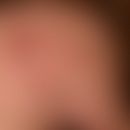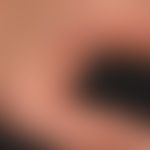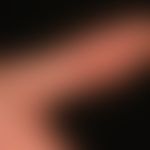Synonym(s)
HistoryThis section has been translated automatically.
DefinitionThis section has been translated automatically.
Epidemic, endemic and sporadic, usually mild, vesicular viral exanthema on palmae, plantae and oral mucosa. Most frequently in summer or autumn.
You might also be interested in
PathogenThis section has been translated automatically.
Coxsackie viruses of group A16; also Coxsackie- A4, -A5, -A9, -A10. Transmission occurs by droplet infection or direct contact. Coxsackievirus A belongs to the genus enterovirus and the species "human enterovirus A2" of which 23 serotypes are known.
ManifestationThis section has been translated automatically.
Mostly occurring in children before the 10th LJ, rarely in adults.
ClinicThis section has been translated automatically.
General: Incubation period 3-7 days, maximum 2 weeks. About 2 weeks of unspecific prodromies (fever, headache, rhinitis, gastrointestinal symptoms).
Oral mucosa: First visible symptoms are pinhead-sized intraoral erythema, which quickly turn into translucent vesicles; later yellowish-white, very painful aphthae. Abortive forms are possible.
Integument: Characteristic is a painful vesiculous exanthema on hands and feet, especially on palmae and plantae, with intermittent, disseminated, flat, angular papules which change into elongated, polygonal vesicles with a reddened courtyard, and later into pustules.
Rare papulo-vesicular (often overlooked) exanthema on the trunk and buttocks.
Besides the uncharacteristic prodromal symptoms, subfebrile temperatures and regional lymph node swelling are found. The concordant occurrence of subacute granulomatous thyroiditis de Quervain with hand-foot-mouth disease was described (Engkakul P et al. 2011).
HistologyThis section has been translated automatically.
Depending on the stage of development (papules, vesicles or erosions) and localization (skin or mucosa) of the lesions, different histological images are found. Mostly evidence of spongiosis, dyskeratotic cells and giant cells. In the dermis, uncharacteristic perivascular accentuated lymphocytic infiltrate.
Differential diagnosisThis section has been translated automatically.
Gingivostomatitis herpetica: Initial manifestation of a herpes simplex infection. Grouped vesicles enorally, usually severe clinical picture.
Herpangina: analogous clinical picture to hand-foot-mouth disease, but usually without the changes in the integument.
Zoster: segmental pattern of infestation. Zoster infections in children are however rather atypical
Varicella: disseminated (not localized) papulo-vesicular exanthema. Vesicles and pustules. Typical multifaceted efflorescence pattern (star map).
Aphthae: few lesions, no integumentary involvement (except Behçet's disease), chronic recurrent course.
Erythema exsudativum multiforme: typical cocard structure of the skin lesions (ring within a ring), foci clearly larger, no painfulness
Complication(s)(associated diseasesThis section has been translated automatically.
Patients with atopic dermatitis may develop pronounced, atypical disseminations of this viral infection(eczema coxsackium).
TherapyThis section has been translated automatically.
Progression/forecastThis section has been translated automatically.
Spontaneous healing usually within 8-12 days. Complications are rare.
Onycholyses(onychomadesis) of the finger and/or toenails are not entirely rare (probably due to a viral infection of the keratinocytes of the nail matrix). On average 4-6 nails detach. Spontaneous healing 100%.
Note(s)This section has been translated automatically.
Attempt to detect virus from fresh stool samples or vesicle contents, complement fixation reaction.
The name of the viruses comes from the US town of Coxsackie (near New York), where the first epidemic was described.
LiteratureThis section has been translated automatically.
- Bernier V et al (2001) Nail matrix arrest in the course of hand, foot and mouth disease. Eur J Pediatr 160: 649-651
- Chan KP et al (2003) Epidemic hand, foot and mouth disease caused by human enterovirus 71, Singapore. Emerg Infect Dis 9: 78-85
- Dalldorf G, Sickles GM (1948) An unidentified, filtrable agent isolated from the feces of children with paralysis. Science 108: 61-62
- Engkakul P et al (2011) de Quervain thyroiditis in a young boy following hand-foot-mouth disease. Eur J Pediatr 170:527-529.
- Elsner P et al. (1985) Hand-foot-mouth disease. Dermatologist 36: 161-164
- Esposito S et al (2018) Hand, foot and mouth disease: current knowledge on clinical manifestations, epidemiology, aetiology and prevention. Eur J Clin Microbiol Infect Dis 37:391-398.
- Faulkner CF et al (2003) Hand, foot and mouth disease in an immunocompromised adult treated with aciclovir. Australas J Dermatol 44: 203-206
- Ho M et al (1999) An epidemic of enterovirus 71 infection in Taiwan. Taiwan Enterovirus Epidemic Working Group. N Engl J Med 341: 929-935
- Shieh WJ (2001) Pathologic studies of fatal cases in outbreak of hand, foot, and mouth disease, Taiwan. Emerg Infect Dis 7: 146-148
- Solomon T et al (2003) Exotic and emerging viral encephalitides. Curr Opin Neurol 16: 411-418
- Wang JR et al (2002) Change of major genotype of enterovirus 71 in outbreaks of hand-foot-and-mouth disease in Taiwan between 1998 and 2000 J Clin Microbiol 40: 10-15
Incoming links (13)
Acutal ulcer; Anonychie acquired; Coxsackie virus infections; Enanthem; Foot-and-mouth disease, false; Foot-and-mouth disease, real; Gingivostomatitis herpetica; Hand-foot-mouth-disease; Hand-foot-mouth exanthema; Kawasaki disease; ... Show allOutgoing links (12)
Aphthae (overview); Behçet's disease; Eczema coxsackium; Erythema multiforme, minus-type; Gingivostomatitis herpetica; Herpangina; Octenidine; Onycholysis totalis; Papel; Subacute granulomatous thyroiditis de quervain; ... Show allDisclaimer
Please ask your physician for a reliable diagnosis. This website is only meant as a reference.
































